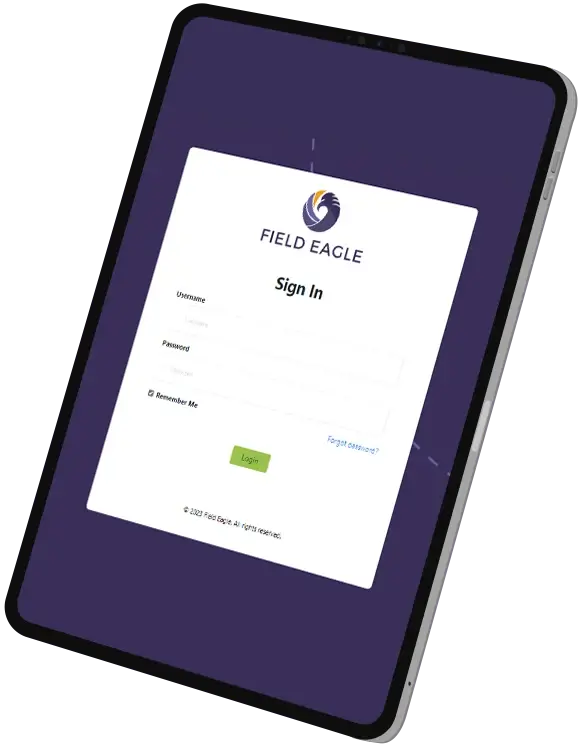In high-risk industries like mining, oil & gas, construction, and manufacturing, safety is not a luxury—it’s a necessity. Implementing effective strategies to reduce injury risk is crucial, with workers surrounded by heavy machinery, extreme conditions, and dynamic job sites. The potential for injury is always present.
The good news? Regular inspections are one of the most effective ways to reduce injury risk and create a safer work environment.
Why Injuries Happen on Industrial Sites
Workplace injuries often stem from:
- Faulty or poorly maintained equipment
- Environmental hazards like debris, spills, or low visibility
- Missed warning signs or overlooked safety protocols
- Inconsistent training and communication
Many of these risks can be minimized with inspections, which help reduce injury risk effectively.
1. Identify Hazards Before They Become Incidents
Inspections help teams spot and address problems before they escalate.
- Loose cables? Flag them.
- Worn treads on stairs? Log it.
- Missing signage? Fix it.
Result: Fewer slip, trip, and fall hazards, thereby reducing injury risk.
2. Ensure Equipment Is Safe to Operate
Poorly maintained machinery can cause crushing, entanglement, or electrical accidents.
Inspections help teams:
- Check brake systems, guards, and emergency stops
- Monitor hydraulic and electrical systems
- Confirm regular service history and proper use
Result: Safer equipment helps reduce risk of injury due to malfunctions.
3. Reinforce Safety Protocols in the Field
Inspections serve as reminders that safety matters. With digital tools:
- Teams follow standardized checklists
- Supervisors review findings in real-time
- Compliance becomes a shared responsibility
Result: Fewer shortcuts and better accountability help to reduce injury risk.
4. Improve Training and Awareness
Inspection data highlights patterns. If multiple teams are missing the same items, it may signal a need for retraining.
- Use inspection reports to tailor toolbox talks
- Identify knowledge gaps
- Empower teams to report safety concerns early
Result: A stronger safety culture contributes to reducing risk of injury on site.
5. Document Everything for Compliance and Prevention
Inspections aren’t just about catching problems—they’re about learning from them.
- Create an audit trail of what was inspected and when
- Track corrective actions through to completion
- Spot recurring risks to adjust processes
Result: Data supports proactive decision-making that helps reduce injury risk.
Final Thoughts
Inspections aren’t paperwork. They’re people work. When done consistently and correctly, they help teams reduce injury risk, improve safety habits, and protect everyone on site.
Because the best injury is the one that never happens.
Regular inspections reduce injury risk by proactively identifying and addressing potential hazards before they cause incidents. Key ways inspections help include:
Identifying hazards early such as loose cables, worn treads, or missing signage
Ensuring equipment safety through checks of brake systems, guards, and emergency stops
Reinforcing safety protocols with standardized checklists and real-time supervisor review
Improving training effectiveness by highlighting patterns in missed safety items
Creating audit trails that document corrective actions and track recurring risks
This systematic approach helps prevent slip, trip, and fall hazards while ensuring machinery operates safely and teams follow proper safety protocols.
Inspections can prevent workplace injuries caused by:
Faulty or poorly maintained equipment that may cause crushing, entanglement, or electrical accidents
Environmental hazards including debris, spills, or low visibility conditions
Missed warning signs or overlooked safety protocols during routine operations
Inconsistent training and communication leading to safety shortcuts
Equipment malfunctions from inadequate maintenance of hydraulic and electrical systems
Many of these injury risks are preventable through disciplined inspection routines that catch problems before they escalate into serious incidents.
Digital inspection tools enhance injury risk reduction through:
Standardized checklists that ensure consistent safety assessments across all teams
Real-time supervisor review enabling immediate response to identified hazards
Shared compliance responsibility making safety a team-wide priority
Pattern identification in inspection data to highlight recurring safety issues
Automated documentation creating comprehensive audit trails for compliance
Instant reporting allowing faster corrective action implementation
These digital capabilities help teams move beyond paper-based processes to create more responsive and accountable safety management systems.
Critical equipment safety checks that reduce injury risk include:
Brake system functionality to prevent runaway equipment incidents
Guard and barrier integrity protecting workers from moving machinery
Emergency stop accessibility ensuring quick shutdown capabilities
Hydraulic system pressure monitoring to prevent sudden failures
Electrical system condition checking for exposed wires or faulty connections
Service history verification confirming regular maintenance compliance
These inspections help identify equipment issues before they cause crushing, entanglement, electrical, or other serious workplace injuries.
Inspection data builds stronger safety culture by:
Tailoring toolbox talks based on common safety issues identified in reports
Identifying knowledge gaps where additional training is needed
Empowering early reporting of safety concerns through accessible documentation
Tracking corrective actions through to completion for accountability
Spotting recurring risks to adjust processes and prevent repeat incidents
Supporting proactive decision-making with data-driven safety improvements
This approach transforms safety from reactive incident response to proactive risk management, creating an environment where injury prevention becomes everyone’s responsibility and the best injury is the one that never happens.







